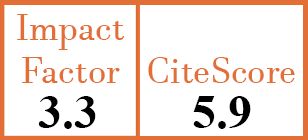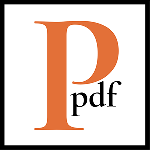Full Papers
Patient clustering by serum inflammatory mediators stratifies early disease-modifying antirheumatic drug-naïve rheumatoid arthritis and reveals distinct pathobiological signatures: a prospective observational cohort
G. Kidoguchi1, M. Ishitoku2, N. Oka3, H. Kobayashi4, Y. Hosokawa5, T. Sugimoto6, Y. Yoshida7, S. Mokuda8, S. Hirata9
- Department of Clinical Immunology and Rheumatology, Hiroshima University Hospital, Hiroshima, Japan. kidogen@hiroshima-u.ac.jp
- Department of Clinical Immunology and Rheumatology, Hiroshima University Hospital, Hiroshima, Japan.
- Department of Clinical Immunology and Rheumatology, Hiroshima University Hospital, Hiroshima, Japan.
- Department of Clinical Immunology and Rheumatology, Hiroshima University Hospital, Hiroshima, Japan.
- Department of Clinical Immunology and Rheumatology, Hiroshima University Hospital, Hiroshima, Japan.
- Department of Clinical Immunology and Rheumatology, Hiroshima University Hospital, Hiroshima, Japan.
- Department of Clinical Immunology and Rheumatology, Hiroshima University Hospital, Hiroshima, Japan.
- Department of Clinical Immunology and Rheumatology, and Division of Laboratory Medicine, Hiroshima University Hospital, Hiroshima, Japan.
- Department of Clinical Immunology and Rheumatology, Hiroshima University Hospital, Hiroshima, Japan.
CER19220
Full Papers
PMID: 41231441 [PubMed]
Received: 20/08/2025
Accepted : 30/10/2025
In Press: 12/11/2025
Abstract
OBJECTIVES:
Rheumatoid arthritis (RA) is a heterogeneous disease; therefore, a one-size-fits-all treatment approach is suboptimal. This study aimed to explore biological heterogeneity in treatment-naive patients with early RA using serum inflammatory mediator profiles to identify distinct subgroups and investigate their longitudinal dynamics.
METHODS:
We conducted an exploratory, hypothesis-generating post-hoc analysis of 204 disease-modifying anti-rheumatic drug (DMARD)-naive patients with early RA from a prospective cohort. Thirteen baseline serum inflammatory mediators, including interleukin (IL)-1β, IL-4, IL-6, IL-10, IL-12p40, IL-12p70, IL-23, IL-1RA, tumour necrosis factor-alpha, interferon-gamma, C-X-C motif chemokine ligand 10, C-C motif chemokine ligand 17, and arginase, were quantified. Patients were stratified using unsupervised hierarchical clustering, followed by correlation and regression analyses to compare clusters and examine response pathways. The predictive value of routine clinical markers for cluster membership was assessed using the receiver operating characteristic curve analysis.
RESULTS:
Two distinct patient clusters were identified based on differing serological and inflammatory mediator profiles. Despite these biological differences, the baseline disease activity and 52-week outcomes were largely similar. However, the pathways of clinical improvement varied by cluster; IL-6 dynamics were uniquely associated with improvement in cluster 1, whereas no dominant mediator was identified in cluster 2. In contrast to C-reactive protein, a low rheumatoid factor titre effectively identified the IL-6-driven subgroup (area under the curve=0.785).
CONCLUSIONS:
Baseline serum inflammatory mediator profiles can stratify DMARD-naive patients with early RA into subgroups with distinct pathobiological mechanisms. These subgroup-specific signatures, including those of the IL-6-driven pathway, offer a basis for developing biomarker-guided therapeutic strategies.


